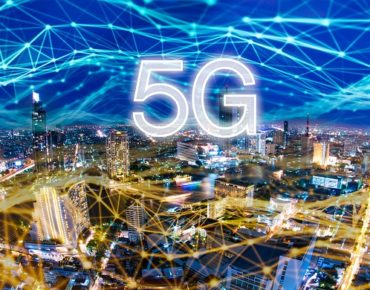U.S. Seeks to Jumpstart 5G Software

In an effort to catch up with 5G equipment leader Huawei, U.S. officials and lawmakers are promoting efforts to forge open software standards that would virtualize hardware and allow 5G networks to run on any manufacturer’s equipment. The goal is to blunt reliance on the Chinese telecom equipment maker’s gear that U.S. officials consider a security threat.
Among those reportedly signing up for the 5G open software initiative are AT&T (NYSE: T), Dell Technologies (NYSE: DELL) and Microsoft (NASDAQ: MSFT). The emphasis on 5G software that would make next-generation networks hardware-agnostic reflects lagging 5G equipment development among key U.S. companies.
With 5G leader Huawei essentially banned from selling telecommunications gear in the U.S., observers note there are currently few if any U.S. companies ready to fill the hardware void.
“The last time I checked, Apple together with Intel are 24 months late in producing a fifth-generation phone—forget about base stations,” said Dan Breznitz, a professor at the University of Toronto specializing in global innovation policy.
Hence, White House economic officials and members of Congress are pushing open software development standards as a way of accelerating 5G deployment without relying on Huawei gear.
The stakes in the 5G deployment race are high. The technology is expected to significantly boost bandwidth and speed, enabling Internet of Things networks potentially linking millions and devices while sweeping up huge volumes of sensor and telemetry data.
According to a 5G forecast released this week market tracker Omdia, the 5G radio access network (RAN) market is expected to quintuple over the next four years to an estimated $21 billion. “The proliferation of 5G RANs is a critical element in the establishment of an end-to-end architecture for 5G that will enable the delivery of advanced services for diverse markets including factory automation and self-driving cars,” Omdia said in a research note released Thursday (Feb. 6).
Meanwhile, Omdia forecasts an eight-fold increase in 5G-enabled smartphone shipments by 2021.
Network vendors such as Ericsson (NASDAQ: ERIC), Nokia (NYSE: NOK), Samsung (KRX: 005930) and Verizon (NYSE: VZ) have been promoting their 5G radio access architectures that include base stations and antennas. RAN control planes can exchange data via software-defined network switches as well as by network function virtualization techniques.
These and other virtualization approaches are presumably central to U.S. efforts to accelerate open 5G software development.
“The big-picture concept is to have all of the U.S. 5G architecture and infrastructure done by American firms, principally,” White House economic advisor Larry Kudlow told the Wall Street Journal. The U.S. initiative also would include Ericsson and Nokia, Kudlow added.
Still, the U.S. open software effort reflects the reality that western equipment vendors trail Huawei in their ability to deploy 5G hardware, especially base stations. “That’s what actually worries me much more,” said Breznitz, who directs the University of Toronto’s Innovation Policy Lab.
Related
George Leopold has written about science and technology for more than 30 years, focusing on electronics and aerospace technology. He previously served as executive editor of Electronic Engineering Times. Leopold is the author of "Calculated Risk: The Supersonic Life and Times of Gus Grissom" (Purdue University Press, 2016).











